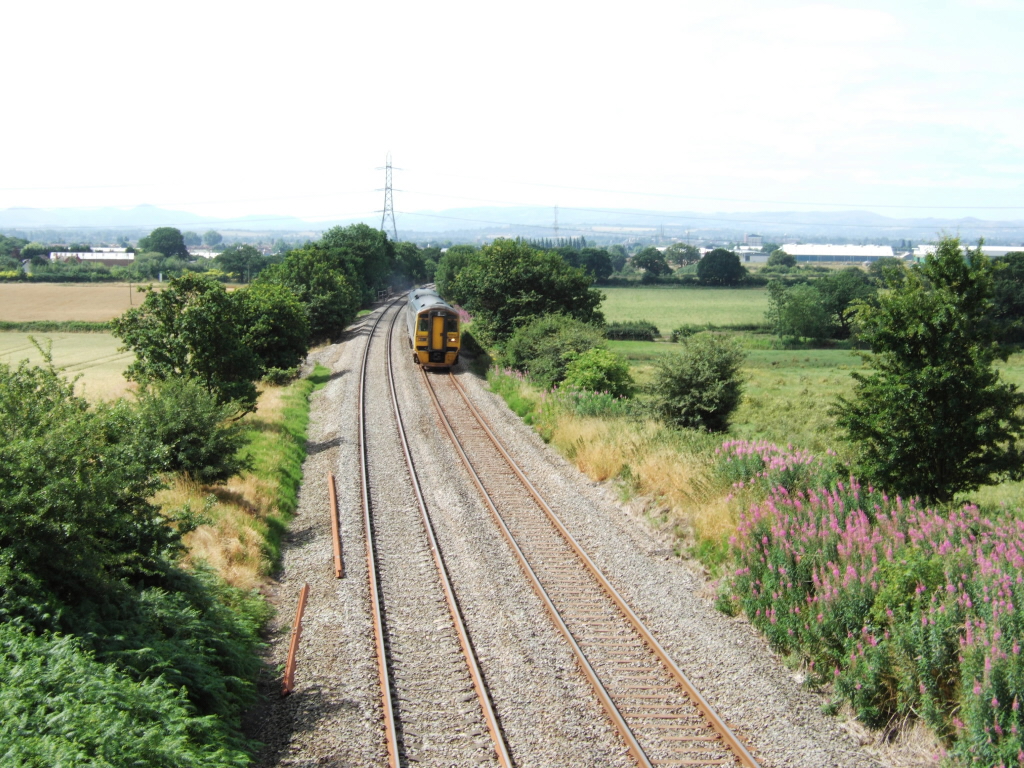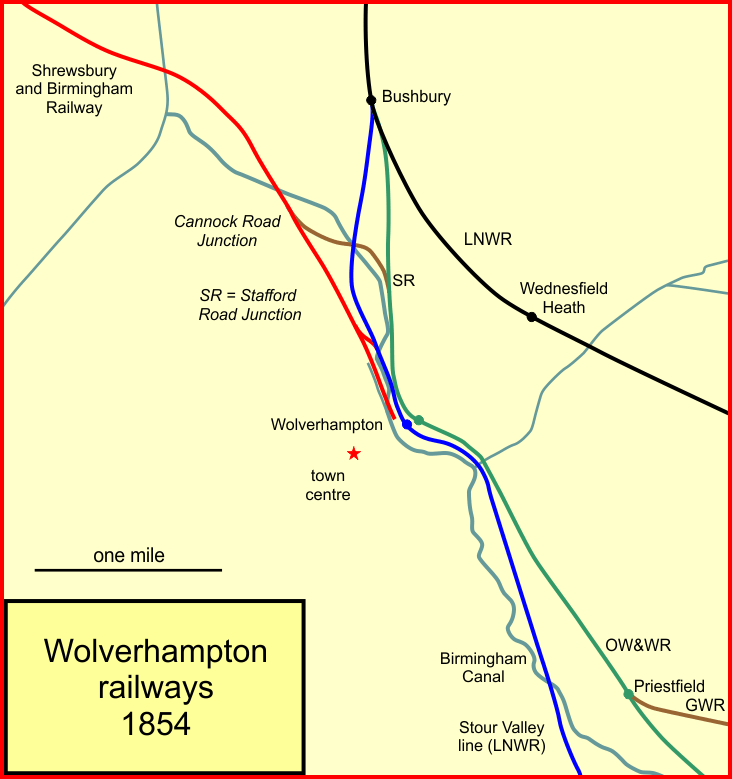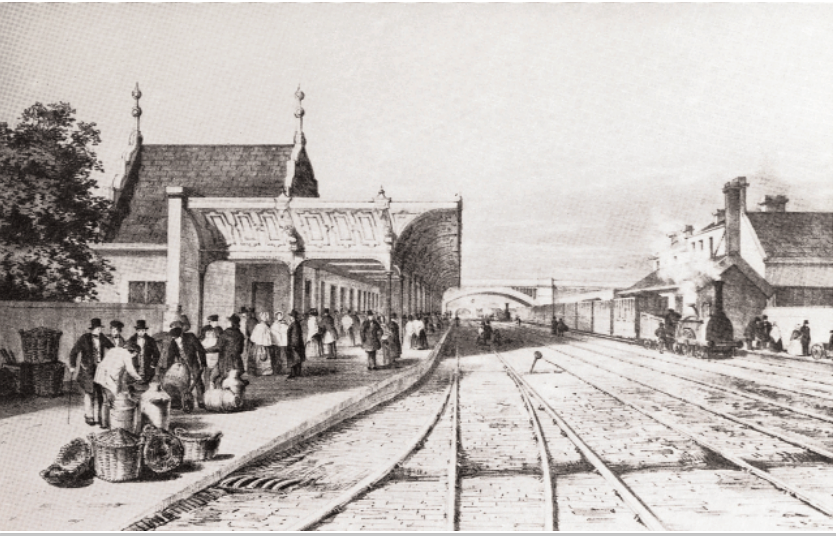|
Rail Transport In Shropshire
The English county of Shropshire has a fairly large railway network, with 19 National Rail stations on various national lines; there are also a small number of heritage and freight lines, including the famous heritage Severn Valley Railway running along its eastern border with Worcestershire. The majority of the county's public rail services are run by Transport for Wales Rail; the remainder are run by West Midlands Trains (under their ''West Midlands Railway'' brand) and Avanti West Coast. National Rail services National Rail services in Shropshire are centred about Shrewsbury station (all other 'national rail' stations in Shropshire have a direct train service to Shrewsbury, which is the county town), which is managed by Transport for Wales. The station is at the junction of the Wolverhampton to Shrewsbury Line, Shrewsbury to Chester Line, the Welsh Marches Line (between Cardiff and Manchester) and the Cambrian Line (towards Welshpool). Craven Arms station is at the junc ... [...More Info...] [...Related Items...] OR: [Wikipedia] [Google] [Baidu] |
Marches Line Battlefield
In Middle Ages, medieval Europe, a march or mark was, in broad terms, any kind of borderland, as opposed to a national "heartland". More specifically, a march was a border between realms or a neutral buffer zone under joint control of two states in which different laws might apply. In both of these senses, marches served a political purpose, such as providing warning of Invasion, military incursions or regulating cross-border trade. Marches gave rise to titles such as marquess#United Kingdom, marquess (masculine) or marchioness (feminine) in England in the Middle Ages, England, ''marqués'' (masculine) and ''marquesa'' (feminine) in Spanish language, Spanish-speaker countries, as well as in the Catalan language, Catalan and Galician language, Galician regions, ''marquês'' (masculine) and ''marquesa'' (feminine) in Portuguese language, Portuguese-speaker countries, ''markesa'' (both masculine and feminine) in Basque Country (autonomous community), Euskadi, ''marquis'' (masculine) ... [...More Info...] [...Related Items...] OR: [Wikipedia] [Google] [Baidu] |
Cambrian Line
The Cambrian Line ( cy, Llinell y Cambrian), also known as the Cambrian Main Line ( cy, Prif Linell y Cambrian) and Cambrian Coast Line ( cy, Llinell Arfordir y Cambrian), is a railway line that runs from Shrewsbury, England, westwards to Aberystwyth and Pwllheli in Wales. Passenger train services are operated by Transport for Wales Rail between the western terminals of Pwllheli, Gwynedd, and Aberystwyth, Ceredigion, with the eastern terminal at Shrewsbury, Shropshire as part of the Wales & Borders franchise. The railway line is regarded to be scenic, as it passes through the Cambrian Mountains in central Wales, Snowdonia National Park and along the coast of Cardigan Bay. The line includes long sections of rural single track and is designated as a community rail partnership. Route From Shrewsbury, the line heads west through northern Powys, serving the towns of Welshpool and Newtown, then continues further west calling at Caersws and then Machynlleth until reaching . At Dovey ... [...More Info...] [...Related Items...] OR: [Wikipedia] [Google] [Baidu] |
Bridgnorth Cliff Railway
The Bridgnorth Cliff Railway, also known as the Bridgnorth Funicular Railway or Castle Hill Railway, is a funicular railway in the town of Bridgnorth in the English county of Shropshire. The line links the Low Town of Bridgnorth, adjacent to the River Severn, with the High Town, adjacent to the ruins of Bridgnorth Castle. The line is one of four funicular railways in the UK built to the same basic design (the others were the Clifton Rocks Railway in Bristol; the Lynton and Lynmouth Cliff Railway in Devon; and the Constitution Hill Railway in Aberystwyth, Wales). It is one of the steepest railways in the country, and at least one source (the information panel outside the top station) claims it is both the steepest and shortest. However, the East Hill Lift Railway, Hastings is graded at a steeper 78%. History Following a public meeting in 1890 to discuss an alternative method of communication between the two parts of Bridgnorth to the 200 steps between High Town and Low Tow ... [...More Info...] [...Related Items...] OR: [Wikipedia] [Google] [Baidu] |
Funicular Railway
A funicular (, , ) is a type of cable railway system that connects points along a railway track laid on a steep slope. The system is characterized by two counterbalanced carriages (also called cars or trains) permanently attached to opposite ends of a haulage cable, which is looped over a pulley at the upper end of the track. The result of such a configuration is that the two carriages move synchronously: as one ascends, the other descends at an equal speed. This feature distinguishes funiculars from inclined elevators, which have a single car that is hauled uphill. The term ''funicular'' derives from the Latin word , the diminutive of , meaning 'rope'. Operation In a funicular, both cars are permanently connected to the opposite ends of the same cable, known as a ''haul rope''; this haul rope runs through a system of pulleys at the upper end of the line. If the railway track is not perfectly straight, the cable is guided along the track using sheaves – unpowered pulleys that ... [...More Info...] [...Related Items...] OR: [Wikipedia] [Google] [Baidu] |
Wolverhampton Railway Station
Wolverhampton railway station in Wolverhampton, West Midlands, England is on the Birmingham Loop of the West Coast Main Line. It is served by Avanti West Coast, CrossCountry, Transport for Wales and West Midlands Trains services, and was historically known as Wolverhampton High Level. History The first station named ''Wolverhampton'' had opened on the edge of the town centre in 1837 on the Grand Junction Railway, this station was renamed Wednesfield Heath in 1855, shortly after the present station was opened, and then was closed in 1873. On 12 November 1849, the Shrewsbury and Birmingham Railway opened a temporary terminus to its line, at a location very close to the present station. The present station was opened on 1 July 1852 by the Birmingham, Wolverhampton and Stour Valley Railway, a subsidiary of the London and North Western Railway (LNWR); it was named ''Wolverhampton Queen Street''. The only visible remnant of the original station is the Queen's Building, the ga ... [...More Info...] [...Related Items...] OR: [Wikipedia] [Google] [Baidu] |
Crewe Railway Station
Crewe railway station is a railway station in Crewe, Cheshire, England. It opened in 1837 and is one of the most historically significant railway stations in the world.Guardian newspaper article, ''The beauty of Crewe'' (6 December 2005). Retrieval Date: 10 August 2007. Crewe station is a major junction on the and serves as a rail gateway for . It is 158 miles north of |
Dublin
Dublin (; , or ) is the capital and largest city of Republic of Ireland, Ireland. On a bay at the mouth of the River Liffey, it is in the Provinces of Ireland, province of Leinster, bordered on the south by the Dublin Mountains, a part of the Wicklow Mountains range. At the 2016 census of Ireland, 2016 census it had a population of 1,173,179, while the preliminary results of the 2022 census of Ireland, 2022 census recorded that County Dublin as a whole had a population of 1,450,701, and that the population of the Greater Dublin Area was over 2 million, or roughly 40% of the Republic of Ireland's total population. A settlement was established in the area by the Gaels during or before the 7th century, followed by the Vikings. As the Kings of Dublin, Kingdom of Dublin grew, it became Ireland's principal settlement by the 12th century Anglo-Norman invasion of Ireland. The city expanded rapidly from the 17th century and was briefly the second largest in the British Empire and sixt ... [...More Info...] [...Related Items...] OR: [Wikipedia] [Google] [Baidu] |
Holyhead
Holyhead (,; cy, Caergybi , "Cybi's fort") is the largest town and a community in the county of Isle of Anglesey, Wales, with a population of 13,659 at the 2011 census. Holyhead is on Holy Island, bounded by the Irish Sea to the north, and is separated from Anglesey island by the narrow Cymyran Strait and was originally connected to Anglesey via the Four Mile Bridge. In the mid-19th century, Lord Stanley, a local philanthropist, funded the building of a larger causeway, known locally as "The Cobb", it now carries the A5 and the railway line. The A55 dual carriageway runs parallel to the Cobb on a modern causeway. The town houses the Port of Holyhead, a major Irish Sea port for connections towards Ireland. Etymology The town's English name, ''Holyhead'', has existed since the 14th century at least. As is the case with many coastal parts of Wales, the name in English is significantly different from its name in Welsh. It refers to the holiness of the locality and has taken ... [...More Info...] [...Related Items...] OR: [Wikipedia] [Google] [Baidu] |
Cardiff
Cardiff (; cy, Caerdydd ) is the capital and largest city of Wales. It forms a principal area, officially known as the City and County of Cardiff ( cy, Dinas a Sir Caerdydd, links=no), and the city is the eleventh-largest in the United Kingdom. Located in the south-east of Wales and in the Cardiff Capital Region, Cardiff is the county town of the historic county of Glamorgan and in 1974–1996 of South Glamorgan. It belongs to the Eurocities network of the largest European cities. A small town until the early 19th century, its prominence as a port for coal when mining began in the region helped its expansion. In 1905, it was ranked as a city and in 1955 proclaimed capital of Wales. Cardiff Built-up Area covers a larger area outside the county boundary, including the towns of Dinas Powys and Penarth. Cardiff is the main commercial centre of Wales as well as the base for the Senedd. At the 2021 census, the unitary authority area population was put at 362,400. The popula ... [...More Info...] [...Related Items...] OR: [Wikipedia] [Google] [Baidu] |
Birmingham
Birmingham ( ) is a city and metropolitan borough in the metropolitan county of West Midlands in England. It is the second-largest city in the United Kingdom with a population of 1.145 million in the city proper, 2.92 million in the West Midlands metropolitan county, and approximately 4.3 million in the wider metropolitan area. It is the largest UK metropolitan area outside of London. Birmingham is known as the second city of the United Kingdom. Located in the West Midlands region of England, approximately from London, Birmingham is considered to be the social, cultural, financial and commercial centre of the Midlands. Distinctively, Birmingham only has small rivers flowing through it, mainly the River Tame and its tributaries River Rea and River Cole – one of the closest main rivers is the Severn, approximately west of the city centre. Historically a market town in Warwickshire in the medieval period, Birmingham grew during the 18th century during the Midla ... [...More Info...] [...Related Items...] OR: [Wikipedia] [Google] [Baidu] |
Manchester
Manchester () is a city in Greater Manchester, England. It had a population of 552,000 in 2021. It is bordered by the Cheshire Plain to the south, the Pennines to the north and east, and the neighbouring city of Salford to the west. The two cities and the surrounding towns form one of the United Kingdom's most populous conurbations, the Greater Manchester Built-up Area, which has a population of 2.87 million. The history of Manchester began with the civilian settlement associated with the Roman fort ('' castra'') of ''Mamucium'' or ''Mancunium'', established in about AD 79 on a sandstone bluff near the confluence of the rivers Medlock and Irwell. Historically part of Lancashire, areas of Cheshire south of the River Mersey were incorporated into Manchester in the 20th century, including Wythenshawe in 1931. Throughout the Middle Ages Manchester remained a manorial township, but began to expand "at an astonishing rate" around the turn of the 19th century. Manchest ... [...More Info...] [...Related Items...] OR: [Wikipedia] [Google] [Baidu] |








.jpg)

